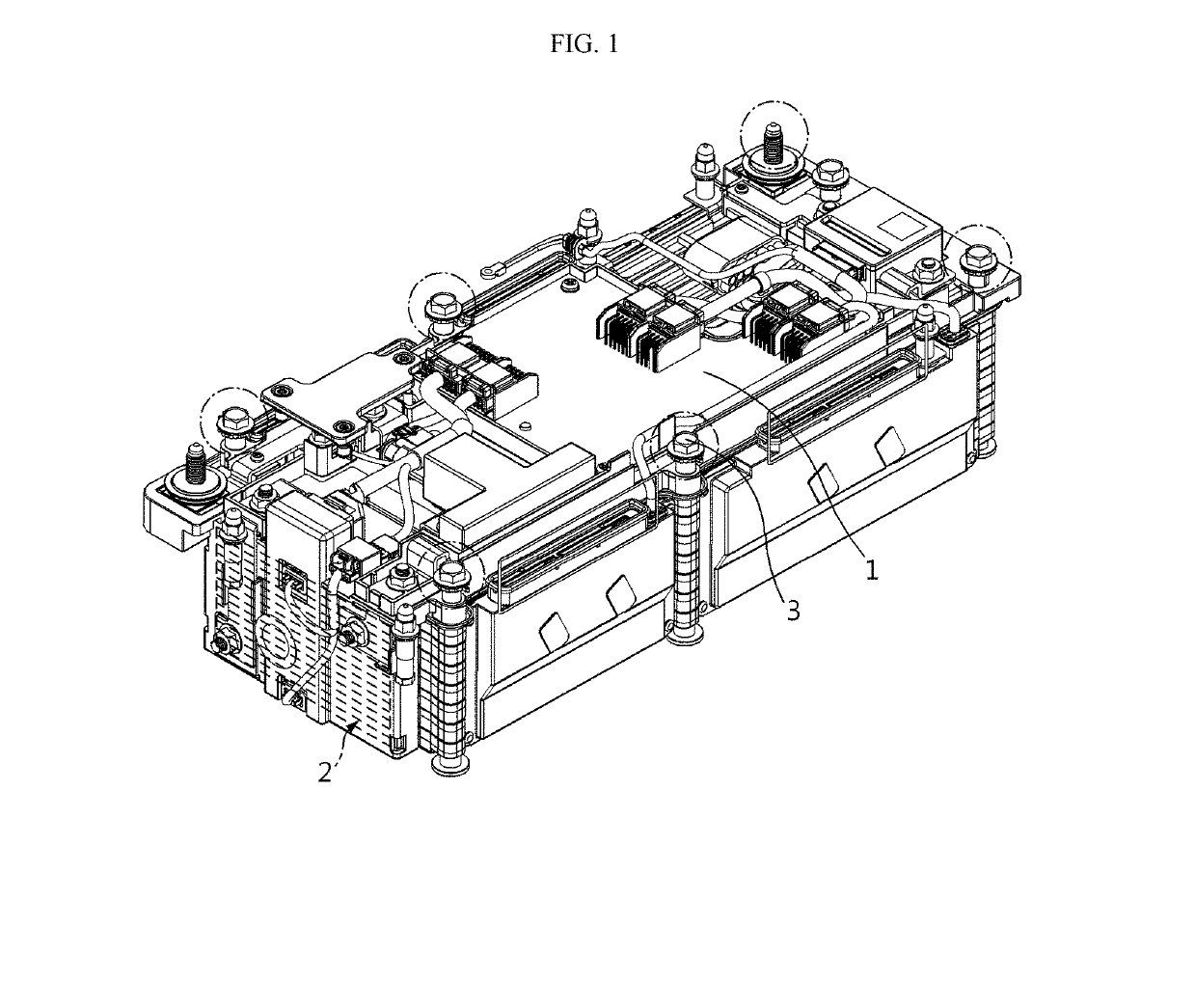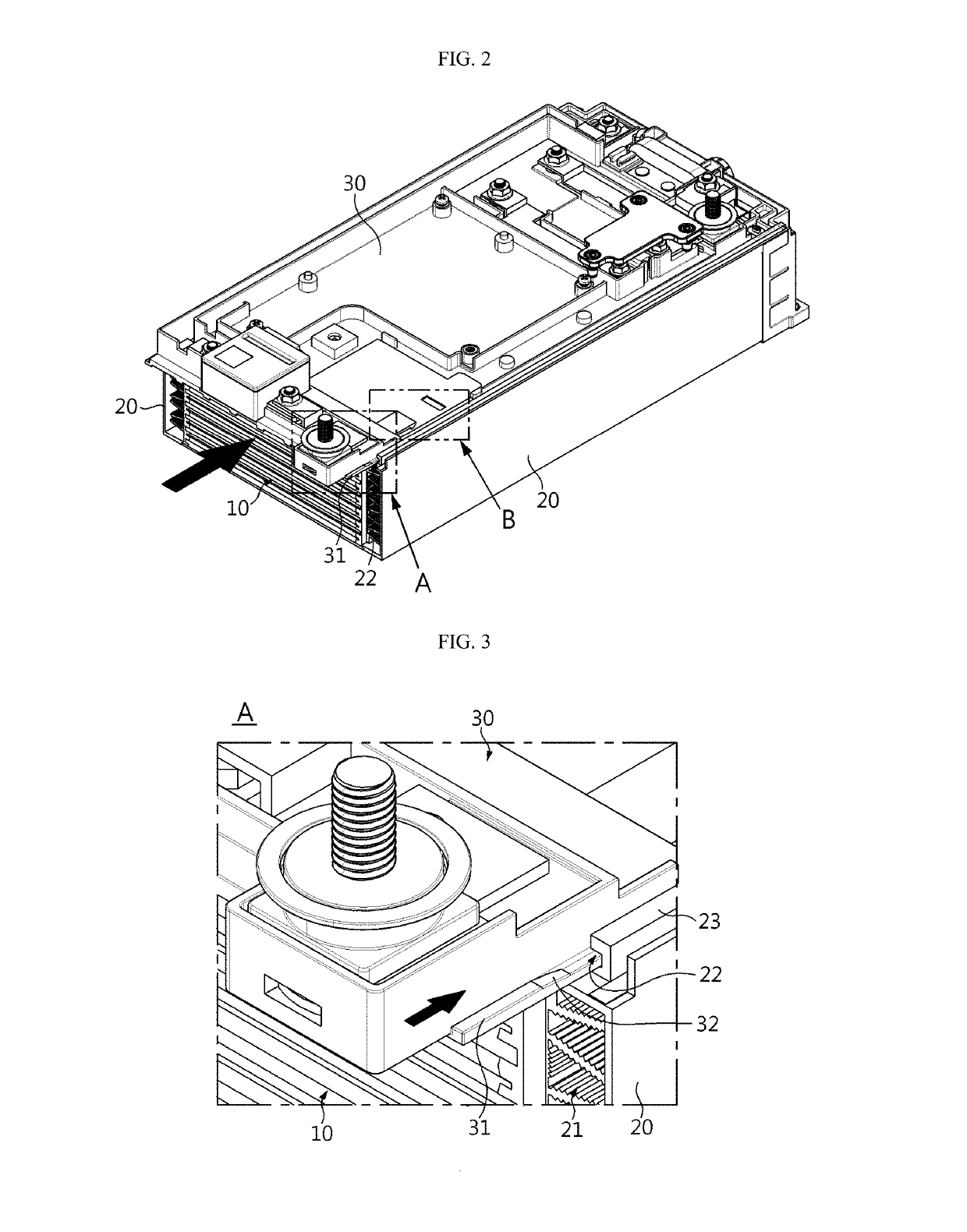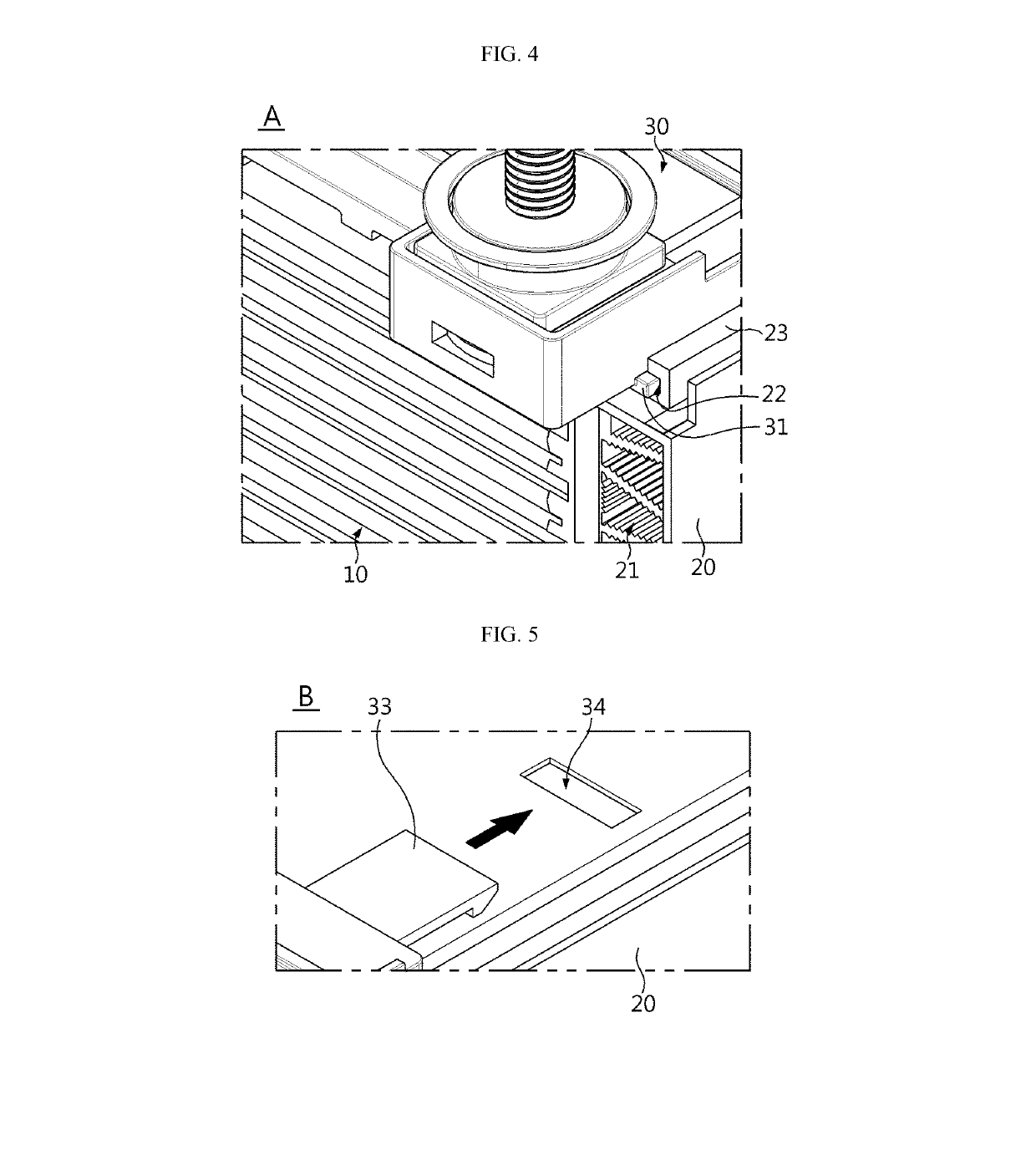Air-cooling battery pack having improved assembling structure
- Summary
- Abstract
- Description
- Claims
- Application Information
AI Technical Summary
Benefits of technology
Problems solved by technology
Method used
Image
Examples
Example
BEST MODE
[0031]FIG. 2 is a perspective view showing an air-cooling battery pack according to an embodiment of the present disclosure.
[0032]Referring to FIG. 2, a battery pack according to an embodiment of the present disclosure includes a cell assembly 10 having a plurality of cells, air ducts 20 disposed to contact both side edges of the cell assembly 10, and a BMS plate 30 detachably assembled to coupling grooves 22 formed at the top of the air ducts 20.
[0033]Each cell of the cell assembly 10 has a thin plate-like body and preferably has a pouch cell structure. The pouch cell includes a positive electrode, a separator and a negative electrode, which are alternately stacked so that an electrode tab is drawn out from at least one side thereof. The positive electrode and the negative electrode are fabricated by coating slurry containing an electrode active material, a binder resin, a conductive agent and other additives to at least one side of a current collector. In the case of a po...
PUM
 Login to View More
Login to View More Abstract
Description
Claims
Application Information
 Login to View More
Login to View More - R&D
- Intellectual Property
- Life Sciences
- Materials
- Tech Scout
- Unparalleled Data Quality
- Higher Quality Content
- 60% Fewer Hallucinations
Browse by: Latest US Patents, China's latest patents, Technical Efficacy Thesaurus, Application Domain, Technology Topic, Popular Technical Reports.
© 2025 PatSnap. All rights reserved.Legal|Privacy policy|Modern Slavery Act Transparency Statement|Sitemap|About US| Contact US: help@patsnap.com



